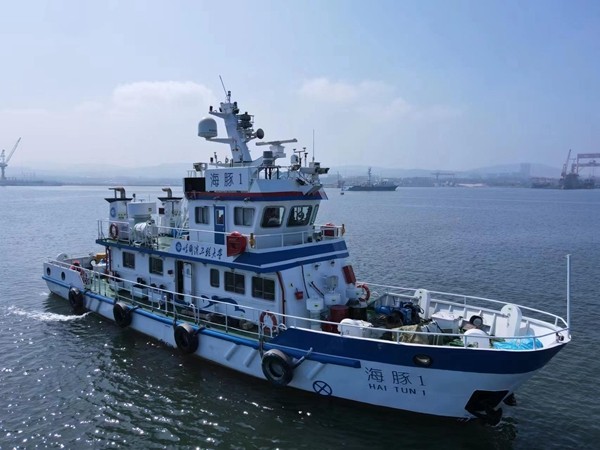"Haitun 1," China‘s first intelligent research vessel equipped with digital twin system, set out on its maiden voyage on Friday in Penglai City
Time:2023-07-05
Views:15505
"Haitun 1," China‘s first intelligent research vessel equipped with digital twin system, set out on its maiden voyage on Friday in Penglai City, east China‘s Shandong Province.Developed by the Harbin Engineering University, "Haitun 1" (or Dolphin 1), is 25 meters long with a displacement of 100 tonnes.

"Dolphin 1" has broken through a number of key technologies such as multi-source information fusion collaborative detection, intelligent perception and environmental reconstruction, and digital twins between ships and Marine environments, creating a "sea flow" laboratory.
The ship sailed from Penglai to Qingdao on its maiden voyage, carrying out a number of experiments on the performance verification of ship intelligent equipment, environmental perception, obstacle avoidance and route re-planning, and virtual and real synchronous interaction of digital twin systems.
"Dolphin 1" has installed a panoramic 128-line / 2-nm Lidar, a 360-degree panoramic infrared vision system, a 360-degree high-line-of-sight panoramic visible light vision system, and a number of sets of intelligent perception equipment, creating a ship navigation situation intelligent perception system, which is equivalent to installing a number of "clairvoyant" and "wind ear". It can accurately detect targets as small as 0.5 meters above the water surface at a distance of 2 nautical miles.
"Dolphin 1" can provide all-weather and all-round three-dimensional reconstruction information of the sailing environment, ensuring that the ship can still hear and see when sailing under adverse conditions such as rainy, foggy, and dark.
"Dolphin 1" is equipped with China‘s first set of ship digital twin system, and for the first time established a ship digital twin technology system such as ship digital modeling, model iterative evolution, virtual and real time interaction, online and offline symbiosis, ship-shore mirroring, etc. Operators can remotely control it thousands of miles away, so that "people drive on the shore, the ship travels at sea". In addition, it can conduct health examination and "pulse inquiry" for various "organs" such as ship engine, propulsion system and navigation system in real time and accurately.






